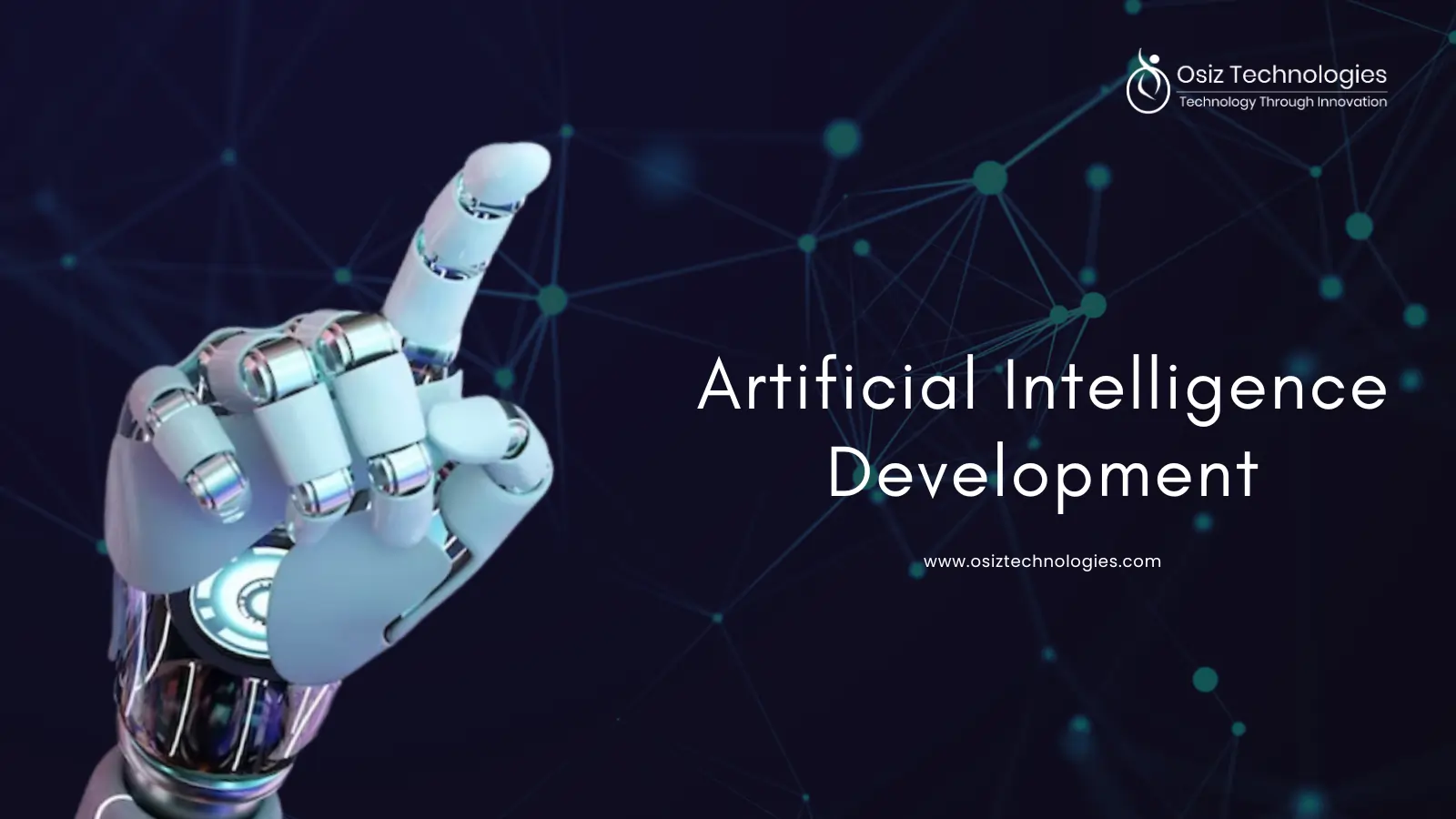Risk and portfolio stability management will be another problem with traders. As innovative, traditional cryptocurrencies do not remain immune to dramatic price movements, thus making them result in enormous losses. More than 27.5 million active users are interacting with stablecoins and have recorded growths in transactions at 50% per annum. The stability offered by the asset has resulted in mitigating the volatility characteristic of traditional cryptocurrencies.
But what happens when we put the stability of stablecoins together with the cutting-edge power of artificial intelligence and blockchain technology? This blog will explore what AI-powered stablecoins are, their role in the cryptocurrency ecosystem, their benefits, challenges, operational mechanisms, and the costs associated with developing them.
What Are AI-Powered Stablecoins?
AI-powered stablecoins are digital assets designed to maintain a stable value, usually pegged to a reference asset, such as the US dollar. Stablecoins have emerged as an innovative solution to the volatile nature of traditional cryptocurrencies. They are considered a superior means of exchange due to their ability to offer a stable store of value.
AI-powered stablecoins take this stability to the next level by integrating machine learning and advanced analytics to manage and maintain their peg more efficiently than traditional stablecoins. Such stablecoins can employ AI models to analyze real-time market data, predict market movements, and dynamically adjust collateral and supply to avoid large price swings.
A stable refuge can be offered in an extremely volatile crypto market where the prices fluctuate by double-digit percentages within hours using AI-powered stablecoins. Such assets offer ways for traders to hold and execute strategies without worrying constantly about the market's volatility.
Popular AI-Powered Stablecoins
Several AI-powered stablecoins are already reshaping the cryptocurrency market. Here are some prominent examples:
SingularityNET (AGIX): This is not a stablecoin per se but has played a role in the development of AI-driven stability mechanisms for various digital assets. The neural networks and machine learning algorithms help predict market movements and optimize collateral management. It allows developers to integrate different AI tools into stablecoin projects.
DAI: Initially algorithmic, DAI has incorporated AI elements to improve its stability mechanisms. DAI’s smart contracts now leverage machine learning models to predict market volatility, adjust collateral requirements, and provide flash crash prevention. This makes it one of the most well-known AI-enhanced stablecoins.
FRAX: FRAX is an algorithmic and collateralized hybrid that uses AI-driven market analysis to ensure price stability. Its fractional-algorithmic protocol uses machine learning to adjust collateral ratios by using neural networks for making price predictions and risk management.
How AI-Powered Stablecoins Operate
AI-powered stablecoins depend on artificial intelligence to control and maintain their value. Unlike traditional stablecoins, which rely on manual adjustments or fixed reserves, AI-powered systems continuously monitor market data, trends, and external factors, such as global financial news. This enables them to make real-time decisions to preserve stability.
Here's how they work:
Algorithmic Adjustment: AI systems would monitor the market conditions and adjust the token supply constantly to maintain price stability. By analyzing multiple market indicators, such as trading volumes, price movements, and sentiment, the AI algorithm predicts price changes and responds with corrective actions to not let the prices fluctuate drastically.
Smart Contract Execution: Intelligent protocols manage collateral, minting, and burning of tokens by real-time market conditions. The systems will optimize the timing of transactions and the fees on gas, thus running smoothly. Machine learning models learn from past transaction patterns to improve contract execution over time.
Decentralized Governance: AI enables decentralized exchanges (DEXs) to make governance decisions through analyses of market trends and user behavior. AI systems can present the most optimal parameters for such key decisions, ensuring that the protocol stays efficient and effective. Moreover, AI enables natural language processing that assists in analyses of community feedback and discussion to evaluate the possible impacts that governance proposals may bring.
Collateral Management: AI systems can optimize collateral requirements based on market conditions. These algorithms analyze various collateral assets' risk profiles and adjust the portfolios appropriately. This is a kind of real-time monitoring such that the collateral will remain adequate even under market stress.
Real-time data analysis: AI analyzes market data in large quantities that include on-chain metrics, social media sentiment, macroeconomic indicators, and cross-chain data. The patterns and correlations help the AI maintain price stability and forecast probable changes in the market.
Integration with Oracles: AI models collaborate with Oracle networks to ensure accurate price feeds and market data. They help detect and filter out anomalous data points, ensuring stablecoin stability during Oracle outages or attacks. By aggregating data from multiple sources, these systems improve the reliability of price discovery.
Benefits of AI-Powered Stablecoin Development
The benefits that AI-powered stablecoins bring to the cryptocurrency ecosystem make them a valuable tool for traders and investors. Here are the key benefits:
Risk Management: AI-powered systems continuously monitor market conditions and adjust parameters in real time, reducing the risk of de-pegging events. Machine learning models can predict potential stress in the market and implement preventive measures before problems arise.
Algorithmic Stabilization: Advanced AI systems apply sophisticated mathematical models to ensure automatic price stability. They process large volumes of data, enabling them to respond promptly and accurately to adjustments in supply and demand much more effectively than traditional stablecoins.
Smart Contract Management: AI makes smart contracts more secure and efficient by automating operations and identifying vulnerabilities before they are exploited. It makes the operation of stablecoins more reliable and secure.
Fraud Detection and Security: Machine learning algorithms allow the detection of suspicious activities and potential security threats added to the stablecoin usage process, which protects the users and their assets.
Data Analysis: Real-time market data is processed and analyzed by AI systems to enhance the decision-making process stability mechanisms and risk management.
Challenges Addressed by AI in Stablecoin Development
Stablecoins face several challenges, primarily related to maintaining price stability and market reliability. AI helps address these challenges in several ways:
Price Stabilization Mechanism: AI helps stabilize prices by managing complex arbitrage calculations. AI systems can predict and mitigate the impact of market shocks and black swan events, ensuring that the stablecoin remains pegged to its reference asset.
Market Monitoring: AI systems excel at identifying market manipulation, ensuring data quality and reliability. They handle high-frequency trade information, addressing network latency and coordinating data from multiple sources for precise insights into stablecoin stability.
Technological Infrastructure: AI enhances system scalability, ensuring that the infrastructure can handle increasing transaction volumes. AI also guarantees system performance during high traffic and provides reliable backup solutions to prevent data loss.
Regulatory Compliance: AI can help stablecoin developers navigate the complex regulatory landscape by assisting with Know Your Customer (KYC) and Anti-Money Laundering (AML) compliance. It can also adapt to changing regulatory standards, ensuring the stability of the coin and protecting user privacy.
How Much Does It Cost to Develop an AI-Powered Stablecoin?
Developing an AI-powered stablecoin comes with several costs, influenced by multiple factors, including:
- Algorithm Complexity: Developing advanced AI algorithms is resource-intensive and increases costs. The more complex the algorithms, the higher the research and development expenses.
- Smart Contract Development: Building secure and functional smart contracts is crucial. The complexity of the contracts will significantly impact development costs.
- Data Integration and Analysis: Integrating real-time market data and processing large datasets is vital but also costly.
- Security Features: Advanced security measures, such as AI-driven fraud detection, add to development costs but are necessary to establish user trust and maintain stability.
- Regulatory Compliance: AI tools used for regulatory compliance, such as KYC and AML protocols, can add to costs but are necessary for long-term success.
- Expert Team: Hiring experienced engineers specializing in AI and blockchain technology is essential, but their expertise comes at a premium.
Conclusion
AI-powered stablecoins are the next revolutionary step in cryptocurrency technology. They are a combination of the stability of traditional stablecoins and the power of AI, offering a stable and efficient solution for traders and investors in the volatile crypto market. They have several advantages, including improved risk management, algorithmic stabilization, and enhanced security, and also solve some of the most pressing problems in this space, such as price stabilization and market monitoring.
However, AI-enabled stablecoins bring myriad advantages, they come attached with complexities and costs, including the need for a qualified ai development team and significant investment in research, technology, and security. AI-enabled stablecoins are going to play a crucial role in the evolution of digital finance, driven by further AI and blockchain advancements.
Listen To The Article
Recent Blogs

X-Mas 30%
Offer











